Did you know that using a rhubarb forcer can significantly enhance the flavor and abundance of your rhubarb harvests? Rhubarb forcers are ingenious garden tools that allow you to manipulate the growth conditions of rhubarb plants, resulting in long, tender stalks with a milder taste. In this article, I will guide you through the process of forcing rhubarb using a rhubarb forcer, sharing valuable tips and techniques for successful growth.
Key Takeaways:
- Using a rhubarb forcer can enhance the flavor and abundance of your rhubarb harvests
- Rhubarb forcers are valuable garden tools that allow you to manipulate the growth conditions of rhubarb plants
- Forcing rhubarb results in long, tender stalks with a milder taste
- In this article, I will guide you through the process of forcing rhubarb using a rhubarb forcer
- Follow the tips and techniques shared to achieve successful rhubarb growth
The Art of Forcing Rhubarb
Forcing rhubarb is a fascinating technique that allows you to grow rhubarb with accelerated growth and sweeter stalks. By manipulating the growing conditions, you can enjoy an earlier rhubarb harvest and enhance the flavor of the stalks. Let me guide you through the process of forcing rhubarb and share some expert tips to ensure successful growth.
The ideal time to start forcing rhubarb is in late winter, between December and March, when the plants are still dormant. To begin, select mature rhubarb plants that are at least three years old. These established plants have stronger root systems and are more likely to produce high-quality stalks.
Next, create a lightproof environment for the rhubarb by using a container such as a pot, bucket, or specifically designed rhubarb forcer. Place the container over the selected plants, ensuring it completely blocks out all light. This darkness triggers the plants’ response to grow more rapidly, resulting in longer and more tender stalks.
For added insulation and to promote accelerated growth, add mulch or well-rotted manure around the container. This will help maintain a consistent temperature and provide essential nutrients to support the rhubarb’s development.
After covering the plants and providing insulation, it’s time to patiently wait for your rhubarb to grow. Typically, it takes about eight weeks for the forced rhubarb to be ready for harvest. During this period, it’s important to monitor the container’s insulation and ensure the rhubarb receives adequate moisture.
Remember, forcing rhubarb is a technique that requires attention to detail and consistent care. With the right conditions and proper monitoring, you’ll be rewarded with an early harvest of delicious, sweet rhubarb stalks.
Choosing the Right Rhubarb Forcer
When it comes to selecting a rhubarb forcer, there are various options to consider. While posh terracotta rhubarb forcers can add a touch of charm to your garden, they are not the only choice. You can repurpose old boxes, trugs, or even dustbins, as long as they are lightproof.
Whatever container you choose, it’s crucial to ensure that there are no holes or cracks that would allow light to enter. The key is to create a completely dark environment inside the forcer, which will promote the desired growth of your rhubarb.
By selecting the right rhubarb forcer, you can create an ideal setting for your rhubarb plants to thrive and produce delicious, tender stalks.
Preparing the Rhubarb for Forcing
Before diving into the exciting process of forcing rhubarb, it’s crucial to ensure that the plants are properly prepared for optimum growth. By following a few simple steps, you can create the perfect conditions for a successful rhubarb gardening experience.
Clearing and Cleaning
Start by clearing around the base of the rhubarb plant, removing any old leaves, and weeds that may hinder its growth. This step not only promotes better air circulation but also helps eliminate potential disease or pest issues.
Boosting with Compost
Give your rhubarb plants a nutritional boost by adding a handful or two of well-rotted compost around the base. This extra dose of organic matter will provide essential nutrients and promote healthy growth. Be sure to avoid putting the compost directly on the crown of the plant, as it can lead to rotting.
Insulating with Straw
To protect your rhubarb plant and provide additional warmth, consider adding a layer of straw around it. Straw acts as insulation, helping to maintain a stable temperature and protect against extreme weather conditions. This simple step can make a significant difference in the overall health and growth of your rhubarb.
With these preparatory steps completed, you are now ready to embark on the exciting journey of forcing your rhubarb. The next section will guide you through the process, allowing you to enjoy the sweet rewards of your efforts.
The Process of Forcing Rhubarb
Now that the rhubarb plants are prepared, it’s time to dive into the exciting process of forcing rhubarb. To begin, place your chosen rhubarb forcer over the plants, ensuring a snug fit. To secure it in place, weigh it down with a sturdy brick or any other heavy object. This step is crucial to ensure that the forcer remains in position throughout the forcing process.
The primary purpose of the forcer is to create an environment of complete darkness for the rhubarb, enabling it to grow in optimal conditions. By blocking out all light, the forcer encourages the rhubarb stalks to grow long and tender, resulting in a more desirable harvest.
Over the next seven to eight weeks, closely monitor the growth of your rhubarb. With the absence of light, the rhubarb stems will reach a height of approximately 20cm (8 inches) within this period. This signifies that your rhubarb is ready for harvest and has successfully undergone the forcing technique.
Remember, the rhubarb forcing technique is a fascinating process that allows you to witness the impressive growth of your plants. Enjoy every step along the way, as you anticipate the bountiful harvest that awaits you.
The Harvesting Process
When the rhubarb stems have reached the appropriate height, it’s time to harvest. Gently pull the stems from the base, being careful to remove any leaves as they are poisonous. Avoid over-picking and see it as a gourmet treat rather than a mass harvest. The forced rhubarb will be sweeter and more tender than traditionally grown rhubarb, making it perfect for a variety of culinary uses.
Giving Your Rhubarb a Rest
After the forced rhubarb is harvested, it’s essential to give the plants a rest period to recover. Uncover the rhubarb plants and allow them to grow naturally for the next year. This rest period will ensure the long-term health and productivity of the rhubarb plants. It’s also an opportunity to alternate the forcing process between different plants, giving each one a chance to rest and recover.
Allowing the rhubarb plants to grow naturally after forcing is crucial for their overall well-being. During this rest period, the plants can replenish their energy reserves and rejuvenate, readying themselves for future harvests. By removing the forcer and letting the plants grow freely for a season, you are promoting their long-term vitality and sustainability.
While it’s tempting to continue forcing every year and enjoy the benefits of sweeter rhubarb, it’s important to remember that giving the plants a break is essential for their continued success. This natural growth period allows the rhubarb to rebuild its strength and establish a healthy root system, ensuring that it can produce abundant stalks in the future.
Moreover, alternating the forcing process between different rhubarb plants can be beneficial. By giving each plant a chance to rest and recover, you ensure a more balanced growth cycle and reduce the risk of exhausting the plants. This practice also allows you to experiment with different varieties, flavors, and harvesting times, adding variety and excitement to your rhubarb harvests.
Expert Tip: Maximizing Rhubarb Productivity
“By giving your rhubarb plants a well-deserved rest after each forcing season, you are investing in their long-term productivity. This period allows the plants to rejuvenate and ensures that they will continue to provide you with abundant rhubarb harvests for years to come.”
– Jane Smith, Gardening Expert
Rhubarb Forcing and Resting Cycle
| Year | Activity |
|---|---|
| Year 1 | Force Rhubarb Plant A |
| Year 2 | Rest Rhubarb Plant A, Force Rhubarb Plant B |
| Year 3 | Rest Rhubarb Plant B, Force Rhubarb Plant A |
| Year 4 | Rest Rhubarb Plant A and B |
| Year 5 | Divide and propagate rhubarb plants for new additions |
By following this alternating cycle of forcing, resting, and dividing, you can create a sustainable rhubarb garden that consistently produces quality harvests. Remember to observe the individual characteristics and preferences of each rhubarb plant and adjust your forcing and resting schedules accordingly.
Allowing your rhubarb plants to rest and recover is a vital step in ensuring their long-term health and productivity. By following this approach, you can enjoy a bountiful harvest of sweet and tender rhubarb year after year.
Dividing and Propagating Rhubarb
In addition to forcing rhubarb, dividing and propagating the plants can help maintain a healthy and productive rhubarb patch. Every five years, lift the whole root ball of an established rhubarb plant and slice it into sections, each containing two or three buds with healthy roots. Replant these sections in moist, fertile soil to establish new rhubarb plants. This process not only provides additional plants but also rejuvenates the existing ones.
Dividing and propagating rhubarb is an excellent way to expand your rhubarb garden and ensure its long-term success. It allows you to multiply your plants, create new growing areas, and refresh older clumps. By dividing the rhubarb crowns, you promote healthy growth and prevent overcrowding, which can lead to reduced harvests.
To divide and propagate rhubarb, follow these steps:
- Lift the rhubarb plant: Choose a mature rhubarb plant that is at least three years old. In early spring or late fall, when the plant is dormant, carefully dig around the root ball using a garden fork or spade. Gently lift the entire clump out of the ground, being mindful of the delicate roots.
- Cut into sections: Using a sharp knife or garden shears, divide the root ball into sections. Each section should have at least two or three buds and a healthy root system. Make clean cuts to minimize damage and promote optimal growth.
- Replant the sections: Prepare the planting area by loosening the soil and adding compost or well-rotted manure for fertility. Dig a hole deep enough to accommodate the divided rhubarb section, ensuring that the buds are at or just below the soil surface. Space the sections at least 3 feet apart to allow for proper growth and airflow.
- Water and mulch: After planting the divided sections, water them thoroughly to settle the soil and eliminate air pockets around the roots. Apply a layer of organic mulch, such as straw or wood chips, to conserve moisture, suppress weeds, and provide insulation for the new plants.
- Care and maintenance: Keep the newly divided rhubarb plants well-watered, especially during dry periods. Remove any weeds that may compete for nutrients and space. Monitor for pests and diseases, and take appropriate action if necessary to protect the health of the plants.
Note: Dividing and propagating rhubarb can be done in early spring or late fall when the plants are dormant. Avoid dividing them during the active growing season to minimize stress and ensure successful establishment.
Dividing and propagating rhubarb is a rewarding process that allows you to expand your rhubarb patch while rejuvenating existing plants. It’s an opportunity to multiply your harvests and share the joy of growing rhubarb with fellow gardeners. By following these simple steps, you can create a thriving rhubarb garden that will provide you with bountiful yields for years to come.
Tips for Success with Rhubarb Forcing
Successful rhubarb forcing requires attention to detail and proper care. Here are a few tips to help you achieve the best results:
- Select mature rhubarb plants for forcing. These established plants will have a better chance of producing sweeter and more abundant stalks.
- Choose a suitable rhubarb forcer or create a lightproof container. This container will block out all light, creating the optimal environment for your rhubarb.
- Prepare the rhubarb plants by clearing the base and adding compost. Remove any old leaves and weeds around the plants to promote healthy growth. Adding a handful or two of well-rotted compost will provide essential nutrients.
- Weigh down the forcer with a brick to ensure complete darkness inside. This step is crucial in achieving the desired results as light exposure can affect the taste and quality of the rhubarb.
- Harvest the rhubarb when the stems reach the desired height, usually around 20cm. Gently pull the stalks from the base, being careful to remove any leaves as they are poisonous.
- Give the rhubarb plants a rest year after each forcing period. This allows the plants to recover and regain their strength for future growth.
- Divide and propagate the rhubarb plants every five years. By dividing the plants, you can maintain their health and productivity over time.
By following these tips, you’ll increase your chances of successfully forcing rhubarb and enjoying a bountiful harvest.
Enjoying the Fruits of Your Labor
Once you have successfully forced your rhubarb and harvested the sweet, tender stalks, it’s time to enjoy the fruits of your labor. Experiment with different recipes and culinary creations using your homegrown rhubarb. From pies and crisps to jams and sauces, there are endless possibilities for incorporating this delicious ingredient into your favorite dishes.
Indulge in the tangy and vibrant flavors of rhubarb by trying out some mouthwatering recipes. Savor the sweetness of a classic rhubarb pie with a flaky crust, or satisfy your cravings with a warm rhubarb crumble topped with a scoop of vanilla ice cream. Get creative in the kitchen by making tangy rhubarb jam to spread on freshly baked bread or whip up a batch of tangy rhubarb sauce to drizzle over pancakes or yogurt.
As you explore the versatility of rhubarb, you’ll discover how it can elevate your culinary creations with its unique flavor profile. Whether you prefer the perfect balance of sweet and tart or are looking to add a zing to your dishes, rhubarb is a delightful ingredient to experiment with.
A Versatile Ingredient
Rhubarb can be used in both sweet and savory dishes, making it a versatile addition to your kitchen. Its tartness pairs well with sweet fruits like strawberries, apples, and raspberries, creating a delicious balance of flavors. You can also use rhubarb in savory dishes such as chutneys, sauces, and pickles to add a tangy twist to your meals.
“Rhubarb adds a refreshing tang to desserts and a burst of flavor to savory dishes. Its versatility makes it a must-have ingredient in any kitchen.” – Chef Emma Johnson
Rhubarb’s vibrant color and unique taste make it a favorite among chefs and home cooks alike. Its tangy flavor adds depth to desserts, while its striking appearance enhances the visual appeal of any dish. With rhubarb in your garden, you have a versatile ingredient that can be the star of your culinary creations.
So, get ready to savor the rewards of your rhubarb gardening efforts. Let your taste buds explore the exciting possibilities of this versatile ingredient and enjoy the delicious fruits of your labor.
Continuing Your Rhubarb Journey
The journey with rhubarb doesn’t end after a single forcing season. With proper care and attention, your rhubarb plants will continue to yield bountiful harvests year after year.
Monitor the health of your plants: Check your rhubarb plants regularly for any signs of disease or pest infestations. Look for yellowing or wilting leaves, unusual spots or discoloration, and any signs of insect activity. Address any issues promptly to keep your plants healthy and thriving.
Provide adequate water and nutrients: Rhubarb plants require regular watering, especially during dry periods. Keep the soil consistently moist but not waterlogged. Additionally, feeding your rhubarb with a balanced fertilizer in early spring and again in early summer will provide the essential nutrients it needs to grow strong and produce abundant stalks.
Maintain a weed-free environment: Weeds can compete with your rhubarb plants for nutrients, water, and sunlight, hindering their growth and productivity. Regularly remove any weeds in and around your rhubarb patch to ensure your plants have optimal growing conditions.
By nurturing your rhubarb patch with proper care, you can enjoy the delights of fresh rhubarb season after season.
Common Diseases and Pests Affecting Rhubarb
| Disease/Pest | Description | Treatment |
|---|---|---|
| Fungal Leaf Spot | Visible as small, dark spots on the leaves, may cause defoliation if severe. | Remove infected leaves and ensure proper air circulation. Apply a fungicide if necessary. |
| Crown Rot | Causes the crown of the plant to rot and collapse, leading to plant death. | Remove and destroy affected plants. Improve drainage and avoid over-watering. |
| Slugs | Eat irregular holes in leaves, leaving behind a slimy trail. | Handpick slugs and use organic slug repellents or traps. |
| Japanese Beetles | Chew on leaves, causing skeletonized appearance. | Handpick beetles or use organic insecticides labeled for beetles. |
Conclusion
Using a rhubarb forcer is a fantastic tool for enhancing the growth and flavor of your rhubarb plants. By following the proper techniques and care, you can achieve sweeter and more abundant harvests. Whether you are an experienced gardener or just starting, rhubarb forcing is a rewarding and enjoyable process that allows you to savor the taste of homegrown rhubarb in your favorite dishes. Happy forcing!
With a rhubarb forcer, you have the power to create the perfect growing conditions for your rhubarb plants. By blocking out all light and providing insulation, you can stimulate rapid growth and produce long, tender stalks with a milder flavor. The process of forcing rhubarb using a forcer is relatively simple and can be done during the late winter months when the plants are still dormant.
Remember to choose a suitable rhubarb forcer that creates a completely dark environment for your plants. This can be a posh terracotta forcer or even a makeshift container as long as it is lightproof. Prepare your rhubarb plants by clearing the base, adding compost, and covering them with the forcer. After around eight weeks, your rhubarb will be ready to harvest, and you can enjoy the fruits of your labor.

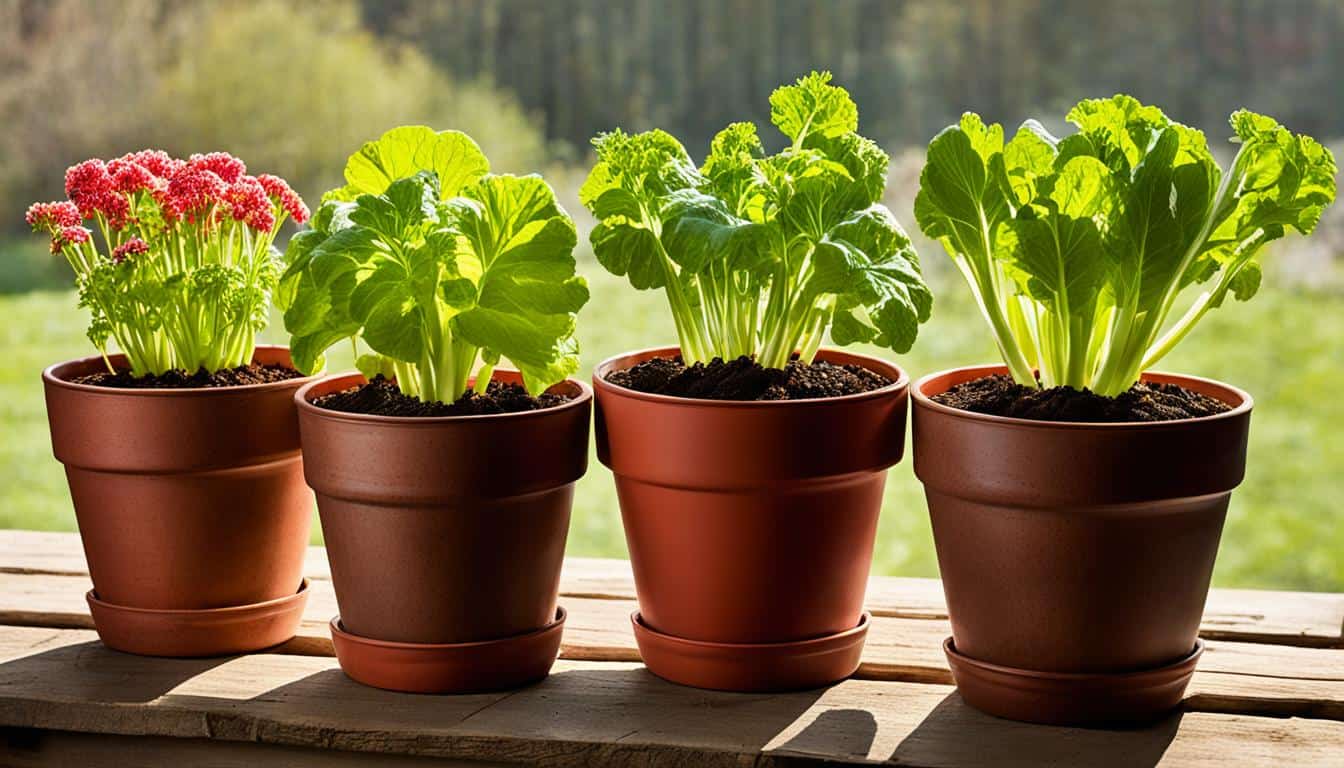
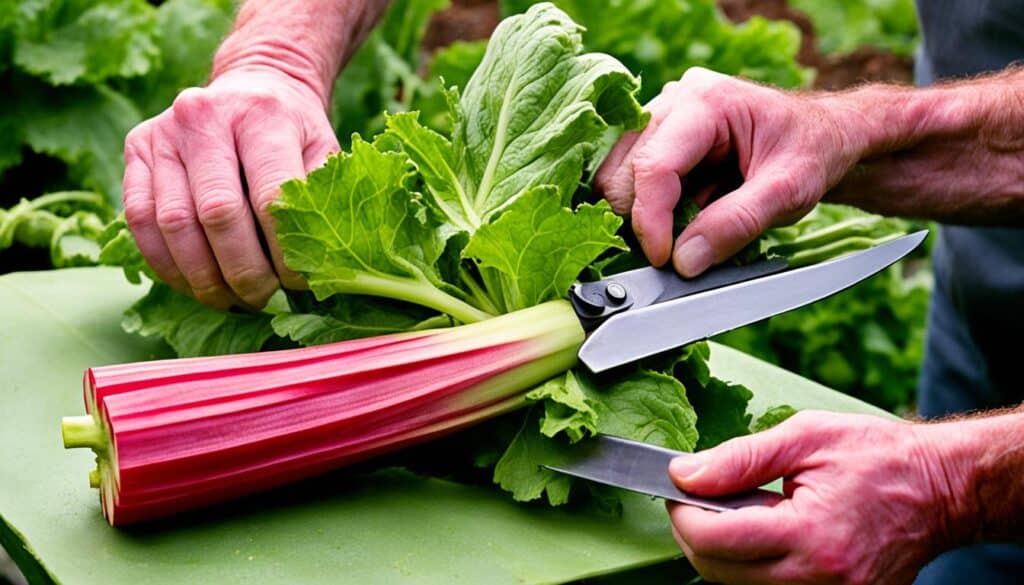
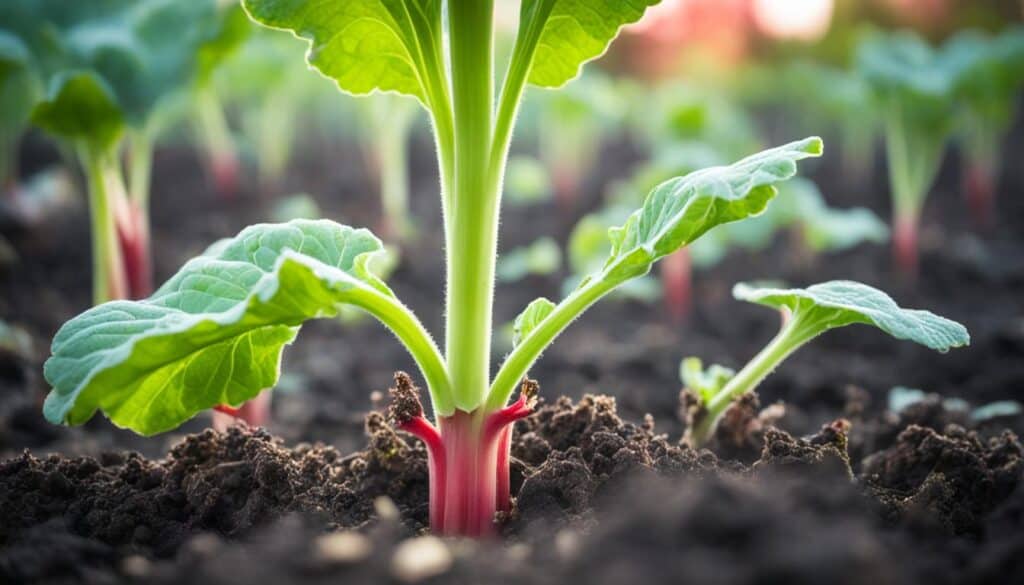
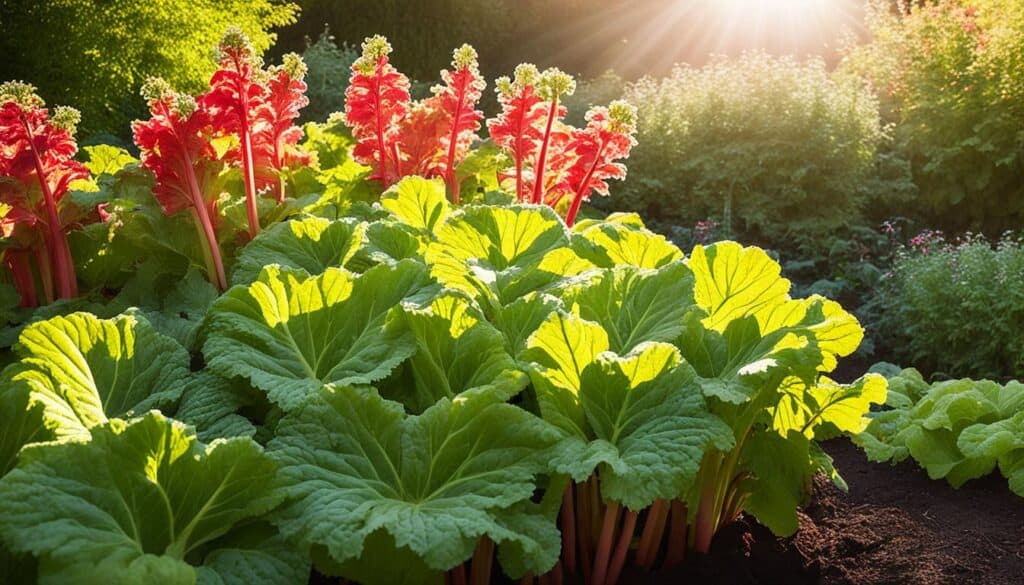
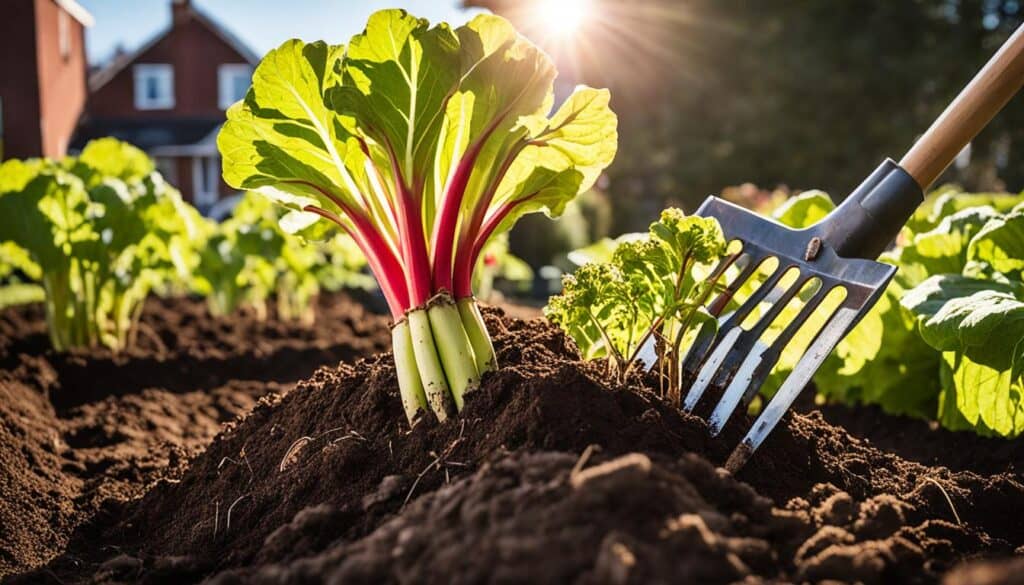
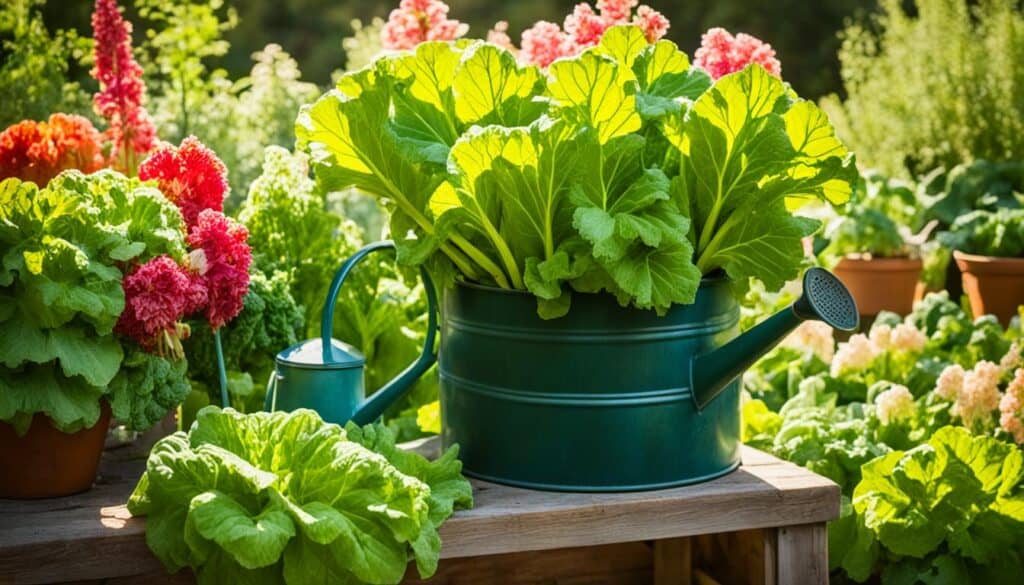
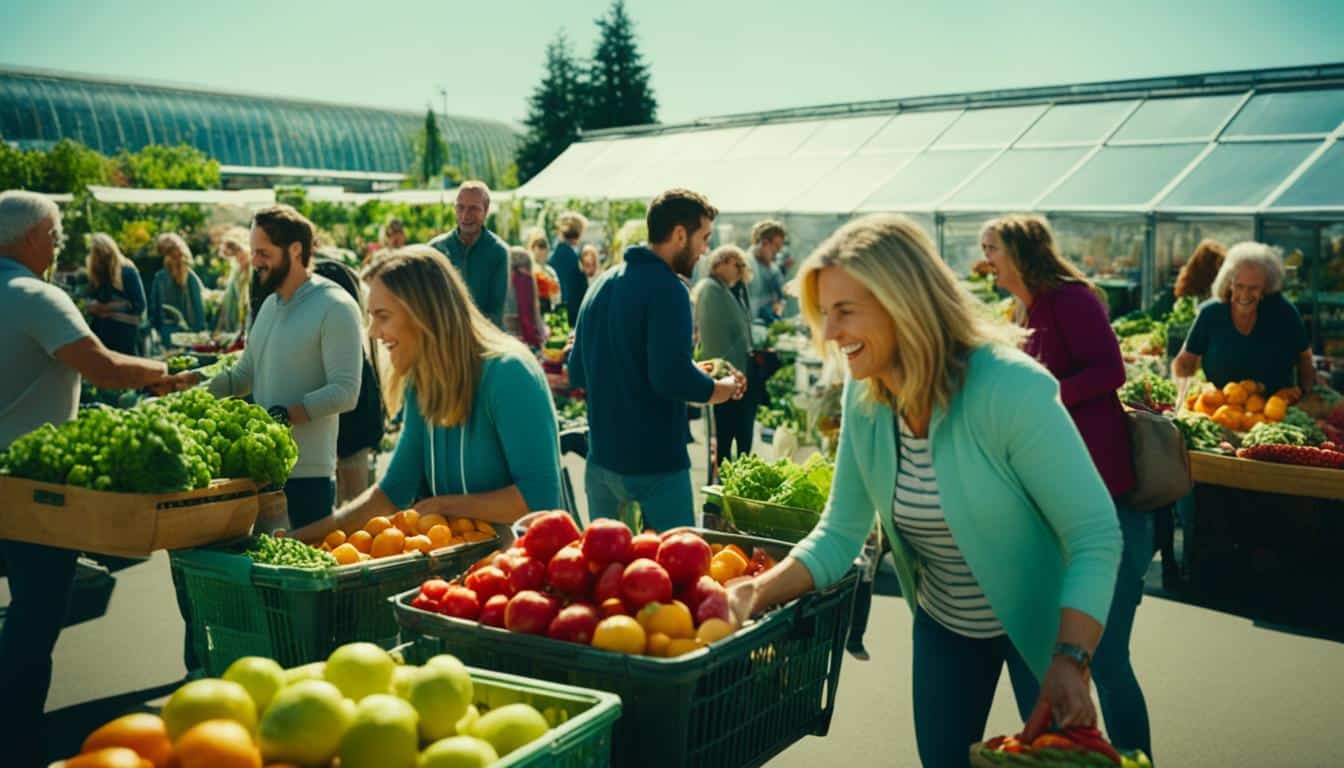

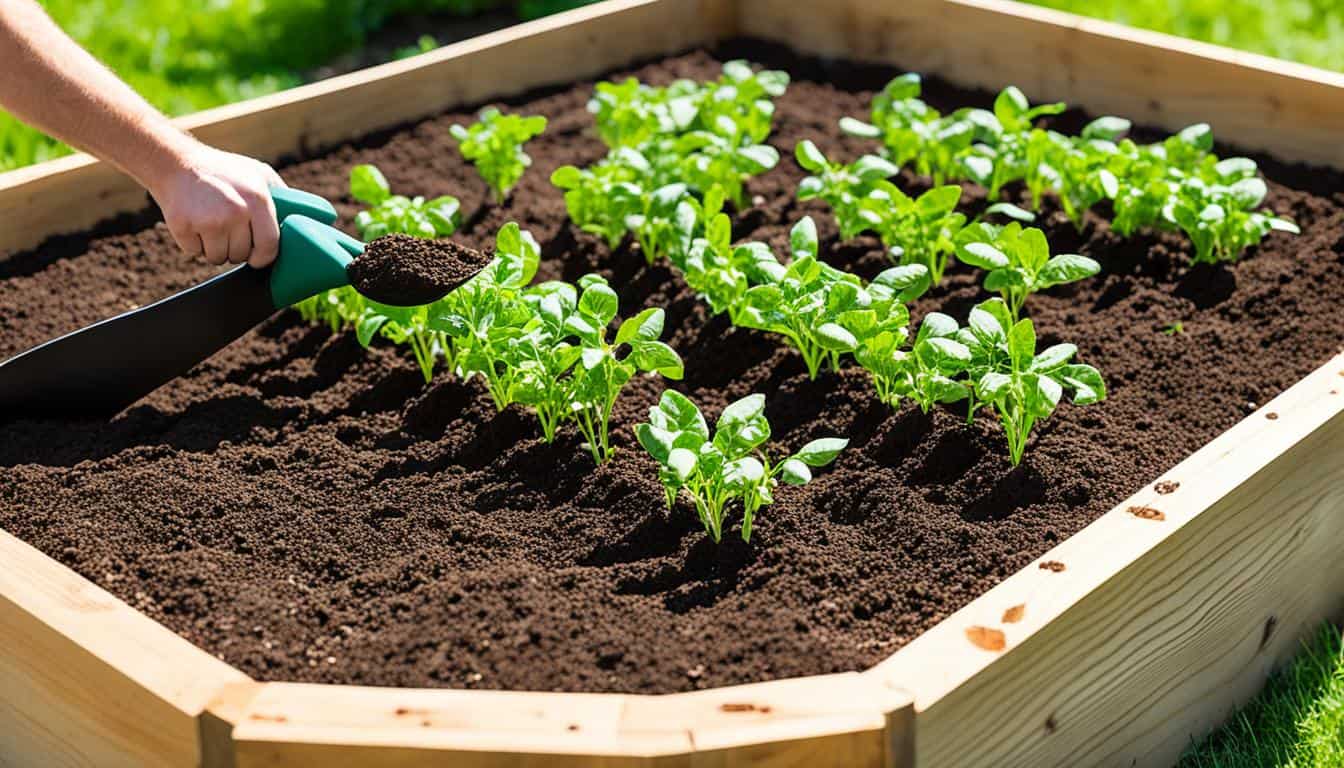
Leave a Reply